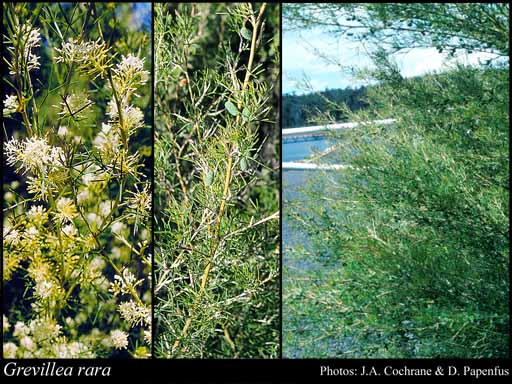- Reference
- Nuytsia 9:244-246,Fig.2 (1993)
- Conservation Code
-
Threatened
A taxon name retains its ‘Threatened’ status until a new name has been officially endorsed and appears in the Gazettal Notice.
- Naturalised Status
- Native to Western Australia
- Name Status
- Current
Dense, prickly shrub, to 2 m high. Fl. white-pink/white, Oct. Lateritic loam. Creeklines.







Scientific Description
Shrubs, 2-3 m high; branchlets hairy, not glaucous. Leaves alternate, 20-30 mm long, hairy, the hairs straight; lamina flat, once divided or twice or more divided, tripartitely divided, divided to the midrib; lobes 4-20 mm long, 0.5-1 mm wide, the margins revolute, enclosing the lower surface of the leaf blade, forming a groove either side of the midvein. Inflorescences axillary or terminal, white or pink; pedicels 4-6 mm long. Perianth 2-3.5 mm long; tepals all free after flower opens, glabrous; ovary glabrous, stipitate, the stipe 1-1.5 mm long; pistil 3-4 mm long, white, pollen presenter conical, style glabrous. Follicles not viscid, dehiscent. Flowers in August, September, October or November. Occurs in the South-west (SW) Botanical Province(s), in the Jarrah Forest (JF) IBRA subregion(s). : Conservation code Threatened (T).
Distribution
- IBRA Regions
- Jarrah Forest.
- IBRA Subregions
- Northern Jarrah Forest.
- Local Government Areas (LGAs)
- Collie, Harvey.